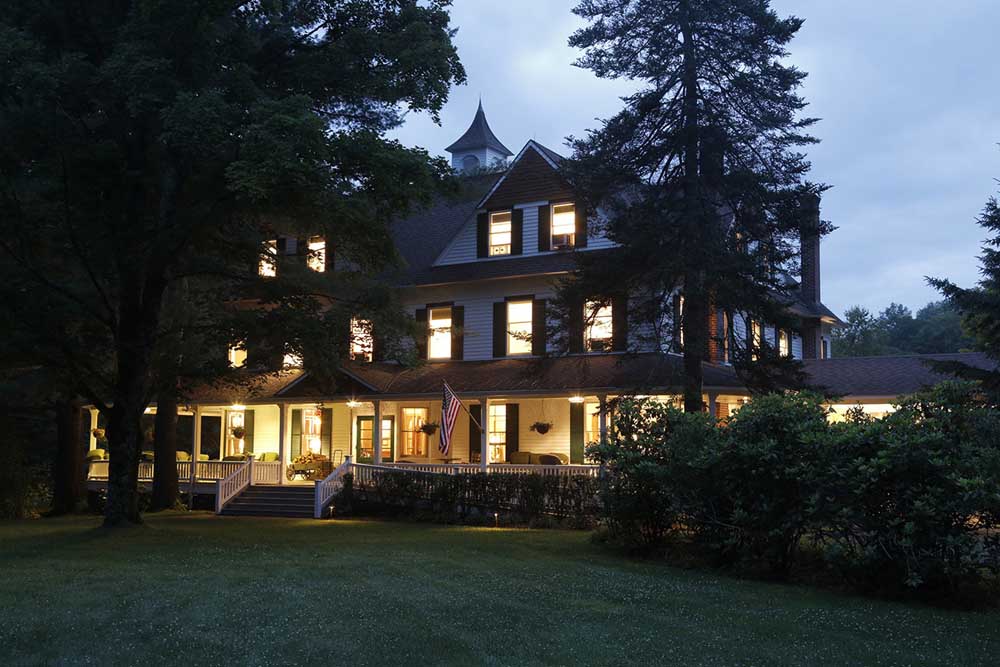Fly-fishing in Montana, where a river still runs through it
Published 12:00 am Sunday, August 7, 2016

- Rowan Nyman via The New York TimesA fisherman casts on the Madison River in Montana. Firehole Ranch offers deluxe Western cabins and convenient access to the equally sought-after West Yellowstone, Gallatin and Firehole rivers.
“In our family, there was no clear line between religion and fly-fishing.” That’s how Norman Maclean began “A River Runs Through It,” his revered 1976 autobiographical novella about his life in Missoula, Montana, as the son of a Presbyterian minister and devout angler in the years before World War II.
On a Sunday morning in June, on the Big Blackfoot River, it was not hard to see how the Macleans came by their faith. Although the family’s home stream runs just outside of Missoula, a town of some 71,000, it remains remarkably unspoiled, tucked away from the surrounding hallmarks of civilization like a secret world.
Trending
For most of its 75-mile length, from its source along the Continental Divide to its confluence with the Clark Fork River just east of town, the Big Blackfoot is lined with Ponderosa pine forest. No traffic-choked roads run along it. No bars or restaurants abut it. You’ll find none of the gaudy riverfront mansions that have given rise to the term “two by four by 10” in towns throughout the modern American West. (That’s two people, four weeks a year, and 10,000 square feet.) There are bigger rivers and rivers that hold larger fish, but few offer anglers a more appealing mix of boulder-dotted rapids, shallow rocky-bottomed flats and swirling deep green pools, and almost none are prettier.
On this day, at the County Line boat put-in, Montana’s Big Sky was living up to its name; sunlight glinted off the river, and the only sound to speak of was the emerald-tinted water burbling along. My guide for the day was John Herzer, a 25-year Missoula resident and the owner, with his wife, Terri, of Blackfoot River Outfitters, one of the area’s top fly-fishing operations. He slid our inflatable raft into the water, handed me the rod he’d rigged with one of his favorite flies, a Noble Chernobyl grasshopper pattern, and we launched.
On my first cast, I got a strike but set the hook too slowly and missed the fish. But just a few casts later, I watched my fly alight and begin drifting downstream. In a moment, a fish rose from the depths, raced to the ‘hopper and took it. When I brought it to the net, I saw it was a gorgeous, copper-colored Westslope cutthroat trout, one of just a few species native to the Big Blackfoot.
After I released my catch, Herzer and I paused for a moment to appreciate our good fortune. In less than five minutes, we had landed a fish of almost startling beauty in a setting no less lovely. I am not a religious person, but I’ll be damned if I didn’t feel something holy.
Catholics have the Vatican, Muslims have Mecca. But to the fly-fishing faithful, there is no more sacred destination than the Big Blackfoot River. Once known mainly to local fishermen only, the Blackfoot gained widespread attention in 1992, when Robert Redford’s film adaptation of Maclean’s book, starring a young Brad Pitt, touched off a craze for the sport and made a trip to the river an essential pilgrimage for veteran and neophyte anglers from around the world.
I was among the inspired. As a boy in upstate New York, I had fished with spinning tackle on local ponds and lakes, but when I saw the movie, fly-fishing struck me as something richer and more complex than conventional fishing, as much an art form as a sport. It had an ineffable appeal, too, something existential, Emersonian.
Trending
Reading Maclean’s book only sunk the hook deeper. It wasn’t just the fishing. If there is a smarter, more affecting meditation on the themes of fathers and sons, brothers, the pleasures of the natural world, love, loss and the haunting power of water, I have yet to come across it. As it has for many others, “A River Runs Through It” became for me a kind of central text, equal parts fishing primer, literary masterwork and spiritual guide.
I went on to become an editor, writer and avid reader, and it remains one of my most beloved books. I also took up fly-fishing with an almost obsessive passion, wetting a line everywhere from Wyoming and Idaho to the Bahamas and Belize. And yet, almost 25 years later, I had not traveled to the Big Blackfoot. It was time to see what had caused all the fuss.
“A River Runs Through It” centers on Maclean’s relationship with his younger brother, Paul. Norman is the archetypal older sibling, married, hardworking and responsible. Paul is the golden child, handsome, athletic and charming, but with a weakness for whiskey and high-stakes poker games. Paul is also a superior, almost superhuman, fisherman.
Much of the book plumbs Norman’s love for Paul (and envy of him) as an angler and otherwise. But the story is also a tragedy involving Paul’s untimely death — he was fatally beaten over unpaid gambling debts — and the regret Norman feels that he could not help save him. The book is told in hindsight, when Maclean is a much older man, a point of view that lends everything a deep nostalgic ache.
Maclean structured the work around four fishing scenes, three of which are set on the Big Blackfoot. Over two days, Herzer and I fished all three of those spots: the canyon above Clearwater Bridge, a beach downstream from that, and the mouth of Belmont Creek.
“The canyon above the old Clearwater Bridge is where the Blackfoot roars loudest,” Maclean wrote. It is here that he first limns the almost heavenly beauty of fly-fishing and Paul’s nearly godlike gift for it. Watching Paul cast “a four-and-a-half-ounce magic totem pole,” the water droplets left in the wake of his line “made momentary loops of gossamer,” Maclean wrote. “The canyon was glorified by rhythms and colors.”
Just above the mouth of Belmont Creek, I hooked a rainbow of my own whose eponymous colors flashed in the sunlight. Shortly before I had left for Montana, the Orlando, Florida, mass shooting had taken place. The day before my departure, Britain had voted to leave the European Union, threatening the global economy. A family member had recently received a serious medical diagnosis. But at that moment on the Big Blackfoot River, all that existed were the sun and the water and a fish on the other end of my line. “One great thing about fly-fishing,” Maclean wrote, “is that after a while nothing exists of the world but thoughts about fly-fishing.”
It pains the cynic in me to say so, but my trip was more magical than haunting. The river was as pretty and well-preserved as I could have dreamed for it to be. I caught fish, memorable ones, in the most storied spots from the book. I communed with one of my literary and fishing heroes.
I held the rainbow for a beat, then another, and released him.








